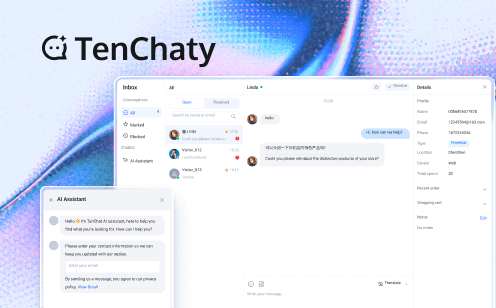
In today's interconnected world, effective communication is paramount. As businesses and organizations increasingly rely on virtual meetings and remote collaboration, the need for accessible and engaging communication tools has never been greater. Enter the world of AI-powered captioning technologies: Live Caption, AI Caption, and AI Caption Generator. These innovative solutions are revolutionizing the way we conduct meetings, making them more inclusive, productive, and globally accessible.
Understanding AI-Powered Captioning Technologies
Live Caption: Real-time Text Representation of Speech
Live Caption technology provides real-time text transcription of spoken words during meetings or presentations. This fundamental captioning solution has been a game-changer for deaf and hard-of-hearing individuals, as well as for those in noisy environments or non-native speakers struggling with audio comprehension.
AI Caption: Enhanced Accuracy and Features Through Artificial Intelligence
AI Caption takes Live Caption to the next level by incorporating artificial intelligence algorithms. These advanced systems can learn and adapt to different accents, speaking styles, and even specialized terminology. The result is a more accurate and context-aware captioning experience that can handle complex audio environments with greater precision.
AI Caption Generator: Advanced, Context-Aware Captioning Systems
The latest evolution in captioning technology, AI Caption Generators, not only transcribe speech but also understand context, sentiment, and even non-verbal cues. These sophisticated systems can generate captions that capture the nuances of communication, including tone and emphasis, providing a richer, more comprehensive captioning experience.
Key Features of Modern Captioning Solutions
Modern AI-powered captioning solutions offer a range of features designed to enhance accessibility and engagement in various meeting settings:
Multi-language Support: Many solutions now support 30+ languages, enabling truly global communication.
Engine Customization: AI engines can be tailored to recognize industry-specific terminology, names, and acronyms, significantly improving accuracy in specialized fields.
Platform Integration: Seamless integration with popular meeting platforms like Teams, Zoom, and others ensures widespread accessibility.
Interpretation Transcription: Some advanced systems can transcribe interpreted speech, further breaking down language barriers.
Benefits of Implementing Advanced Captioning
The implementation of AI-powered captioning technologies brings numerous benefits to organizations:
Improved Accessibility: By providing real-time text representation of speech, these technologies make meetings accessible to deaf and hard-of-hearing individuals, as well as those with auditory processing difficulties.
Enhanced Engagement and Comprehension: Captions can improve focus and understanding for all participants, especially in noisy environments or when dealing with complex topics.
Support for Global Teams: Multi-language support and real-time translation capabilities facilitate communication across language barriers.
Compliance with Accessibility Regulations: Many regions now require organizations to provide accessible communication options, making AI captioning an essential tool for regulatory compliance.
Technical Aspects of AI Captioning
At the heart of AI captioning technologies lies a complex interplay of speech recognition, natural language processing, and machine learning algorithms.
Speech-to-text technology forms the foundation, converting audio input into text output. However, the magic happens when machine learning algorithms are applied to this process. These algorithms can learn from vast datasets of human speech, improving their accuracy over time and adapting to different accents, speaking styles, and even background noise.
Natural language processing (NLP) takes this a step further, allowing the AI to understand context, sentence structure, and even sentiment. This is what enables AI Caption Generators to produce more nuanced, context-aware captions.
One of the key technical challenges in AI captioning is achieving low latency. For captions to be truly useful in real-time communication, they need to appear almost instantaneously. This requires powerful processing capabilities and optimized algorithms that can transcribe and analyze speech in milliseconds.
Applications Across Various Settings
The versatility of AI captioning technologies makes them valuable across a wide range of settings:
Corporate Meetings and Conferences: From daily team stand-ups to large-scale virtual conferences, AI captions ensure that every participant can follow along, regardless of hearing ability or native language.
Educational Webinars and Lectures: In online learning environments, captions can significantly improve comprehension and retention, especially for non-native speakers or students with learning differences.
Live Events and Broadcasts: AI captioning can make live streams and broadcasts more accessible to a wider audience, increasing engagement and reach.
Accessibility Services: For organizations serving deaf and hard-of-hearing individuals, AI captioning technologies provide a cost-effective way to ensure communication accessibility.
Challenges and Solutions in AI Captioning
While AI captioning technologies have made tremendous strides, they still face some challenges:
Complex Audio Environments: Background noise, multiple speakers, or poor audio quality can impact caption accuracy. Advanced noise cancellation algorithms and speaker diarization techniques are being developed to address these issues.
Specialized Terminology: Technical jargon, proper nouns, and industry-specific terms can be difficult for general AI models to capture accurately. This is where engine customization becomes crucial, allowing the AI to be trained on specific vocabularies.
Privacy and Data Security: As with any technology handling potentially sensitive information, ensuring the privacy and security of transcribed data is paramount. Leading providers implement robust encryption and data protection measures to address these concerns.
Balancing Speed and Accuracy: There's often a trade-off between the speed of caption generation and its accuracy. The most advanced systems use sophisticated algorithms to optimize this balance, providing near-real-time captions without sacrificing quality.
Best Practices for Implementing AI Captioning
To get the most out of AI captioning technologies, organizations should follow these best practices:
Assess Your Needs: Understand your specific use cases, audience requirements, and technical constraints before choosing a solution.
Choose the Right Provider: Look for providers with a track record of accuracy, reliability, and ongoing innovation in AI captioning.
Customize for Your Context: Take advantage of engine customization features to improve accuracy for your specific industry or use case.
Regular Monitoring and Optimization: Continuously monitor caption quality and gather user feedback to identify areas for improvement.
Provide User Training: Ensure that your team knows how to effectively use and benefit from the captioning features.
Future Trends in AI Captioning
The field of AI captioning is rapidly evolving, with several exciting trends on the horizon:
Integration with AR/VR: As virtual and augmented reality become more prevalent in business and education, AI captioning will need to adapt to these immersive environments.
Advanced Real-time Translation: We can expect to see more sophisticated real-time translation capabilities, enabling truly seamless multilingual communication.
Emotion and Context Recognition: Future AI captioning systems may be able to capture not just words, but also tone, emphasis, and emotional context, providing a more complete representation of the speaker's intent.
Continuous Learning Systems: AI models that can learn and improve in real-time, adapting to new speakers and contexts on the fly, will further enhance caption accuracy and relevance.
Tencent Real-Time Communication (TRTC) Solution
As organizations look to implement advanced captioning technologies, Tencent Real-Time Communication (TRTC) offers a comprehensive solution that integrates Live Caption, AI Caption, and AI Caption Generator features.
TRTC's AI captioning capabilities leverage cutting-edge machine learning algorithms to provide highly accurate, low-latency captions across multiple languages. The system's ability to customize AI engines for specific terminologies and contexts makes it particularly valuable for specialized industries or technical fields.
Key benefits of using TRTC for advanced captioning needs include:
Seamless Integration: TRTC's captioning features can be easily integrated into existing communication platforms and workflows.
Scalability: Whether you're captioning a one-on-one meeting or a large-scale virtual conference, TRTC can handle the load.
Customization: TRTC offers robust engine customization options to improve accuracy for your specific use case.
Privacy and Security: With enterprise-grade security measures, TRTC ensures that your communication data remains protected.
Getting started with TRTC for your captioning requirements is straightforward. The platform provides comprehensive documentation, SDKs, and APIs, along with dedicated support to help you implement AI captioning in your applications or services.
Conclusion
The advent of AI-powered captioning technologies - Live Caption, AI Caption, and AI Caption Generator - is transforming the landscape of real-time communication. These tools are not just about accessibility; they're about creating more engaging, inclusive, and productive meeting experiences for everyone.
As we look to the future, the potential of these technologies is boundless. From breaking down language barriers to enhancing comprehension and engagement, AI captioning is set to play a crucial role in how we communicate in an increasingly global and digital world.
For organizations looking to stay ahead of the curve and provide the best possible communication experience for their teams and customers, now is the time to explore and implement these powerful AI captioning solutions. With platforms like Tencent Real-Time Communication (TRTC) offering robust, customizable, and scalable captioning features, the future of accessible and engaging meetings is within reach.
Embrace the power of AI captioning and take your communication to the next level. Your teams, customers, and bottom line will thank you for it.


